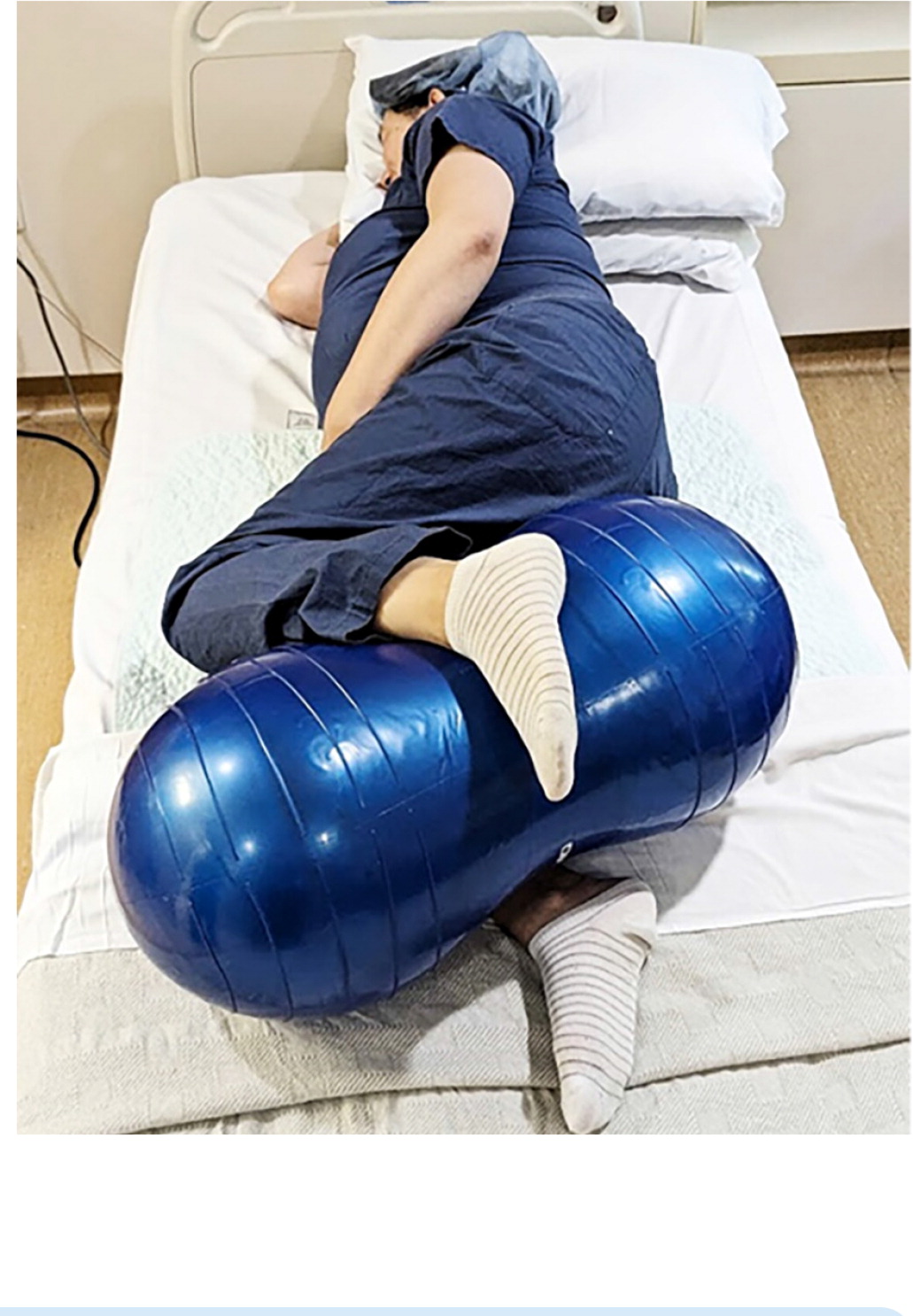
Am Fam Physician. 2024;109(4):367-368
Author disclosure: No relevant financial relationships.
Clinical Question
Does the use of a peanut ball in pregnant patients with an epidural improve labor outcomes?
Evidence-Based Answer
In pregnant patients laboring with epidural anesthesia, the use of a peanut ball with regular position changes decreases the duration of first-stage labor by 87 minutes compared with usual care (Figure 1). (Strength of Recommendation [SOR]: A, meta-analysis of randomized controlled trials [RCTs].) The effect may be more pronounced in primiparous patients. (SOR: B, single RCT.) A patient safety bundle that includes several improvements in labor support, including the use of a peanut ball, is associated with a reduction in cesarean deliveries. (SOR: B, cross-sectional cohort study.)

Evidence Summary
A 2022 systematic review and meta-analysis of four randomized or quasirandomized clinical trials (n = 818) compared the effect of using a peanut ball with usual care for laboring patients with epidural analgesia.1 In the intervention groups, researchers encouraged primiparous and multiparous patients 18 to 35 years of age with a singleton fetus in vertex position to use a peanut ball soon after epidural placement for at least 15 minutes every hour until reaching full cervical dilation. Patients changed position every 0.5 to 2 hours while using the peanut ball. Compared with patients receiving usual care, those laboring with a peanut ball had a shorter first stage of labor (two trials; n = 272; mean difference [MD] = 87.5 minutes; 95% CI, 80.3 to 94.5; high-certainty evidence based on the GRADE system) and a shorter second stage of labor (one trial; n = 201; MD = 22.2 minutes; 95% CI, 20.8 to 23.5; moderate-certainty evidence). The use of a peanut ball as a single intervention did not significantly change the risk of cesarean delivery (three trials; n = 669; relative risk = 0.75; 95% CI, 0.57 to 1.00; low-certainty evidence).
Subscribe
From $180- Immediate, unlimited access to all AFP content
- More than 125 CME credits/year
- AAFP app access
- Print delivery available
Issue Access
$59.95- Immediate, unlimited access to this issue's content
- CME credits
- AAFP app access
- Print delivery available
